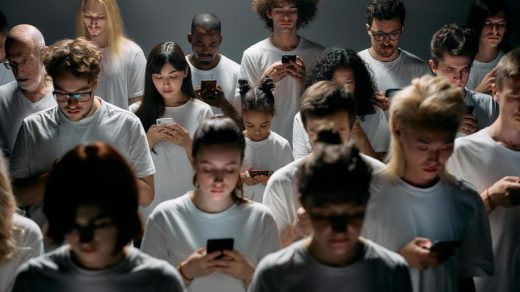Probably one of the coolest digital historical projects I’ve ever run into is the Venice Time Machine. Before we talk any further, you should watch a short YouTube video they made, because that will preempt a lot of explaining. You can stop at 2:20 and skip the credits.* The main thing is this: the reconstruction of the Rialto district in Venice over a period of more than thousand years in the video is not just an artist’s impression, but it’s the result of years and years of serious historical research, using the vast archives of the city, that reach back into the middle ages.
By using the whole scala of digital techniques, scholars of the École Polytechnique Fédérale de Lausanne EPFL and the Ca’ Foscaria University in Venice aim to digitise all 80 km of Venice’s State Archives.** Eighty (!) kilometres of documents, that’s what we nowadays call Big Data. But to become big data the old documents have to be scanned first. With the help of a technique called tomography, robots and 360-degree scanners it will soon be possible to take x-ray photo’s from different angels of a book to produce virtual pages without actually opening the document, like in medical imaging. Some ancient handwriting will always be very hard to read even for the experts, but the technique of optical character recognition is still developing and in the near future the computer will be able to read at least parts of the documents. The computer will also be able to recognize patterns in texts and indicate relations between documents. This involves artificial intelligence and so called ‘deep learning’.
The databases aren’t filled with texts only, but also with pictures. Besides that, cartographic materials are being used, from the Napoleonic cadastre until medieval maps. The ulitmate goal is to create a four-dimensioal version of the past: a three-dimensional space (length, width and height) plus the chronologcal element, time. So actually there’s a basic database that’s being more and more enriched in the course of time. The public can be involved in the production of knowledge by creating a community, that will stimulate the debate about our common past. This community is also needed for describing metadata to make the database more accessible.
The Venice Time Machine can be compared to a monumental building and maybe it will take decades to finish it. Sure enough parts of the building will be rebuild or eventually demolished. While technology is advancing, the system will improve and new digital tools will show up. In an Arte-documentary Frédéric Kaplan, professor and director of ‘Digital Humanities Lab’ at EPFL, puts forward the possibility of an European Time Machine, with Amsterdam, Paris, Budapest and Jerusalem as entry points to put together an even bigger 4D version of the past.*** These time machines will help historians to switch from micro- to macroperspective, from close reading to distant reading with a click of the mouse. It will also support the democratization of the vast amount of historical data and make history sexy.
Resources
* A short introduction on YouTube: Venice 4D – Rialto district (950-Now).
** Venice Time Machine VTM on website École Polytechnique Fédérale de Lausanne EPFL: https://vtm.epfl.ch/.
*** Venice Time Machine – History and Big Data, on Arte: https://www.arte.tv/en/videos/RC-015617/venice-time-machine-history-and-big-data/. Eight short (four minutes) video documentaries, highly recommended.



Cool! Will be interesting to see how these historic visualizations will develop realistically and in VR. This a 3D representation of 17th century London before The Great Fire created by six students of De Montfort University: https://www.youtube.com/watch?v=SPY-hr-8-M0
Very interesting! Thanks for sharing that video. I really hope these machines will make history sexy.